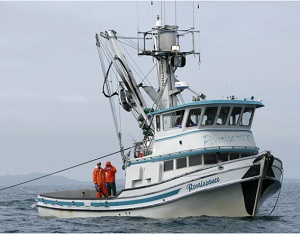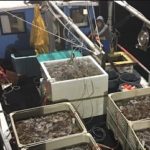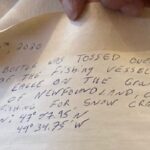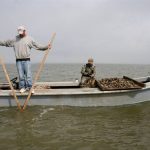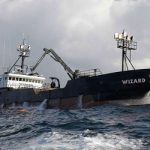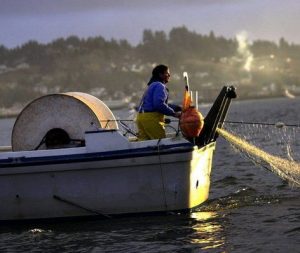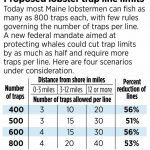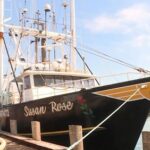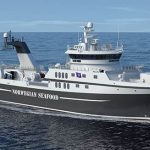Tag Archives: Alaska fishermen
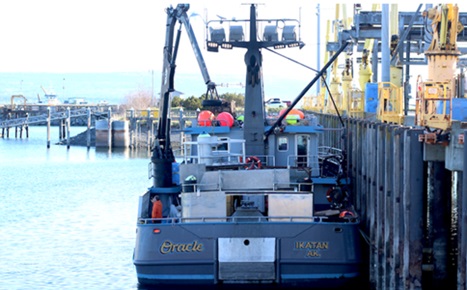
As salmon season kicks off, some Alaska fishermen fear for their futures
On a brilliant spring morning, Buck Laukitis, a longtime fisherman from this Kenai Peninsula town, stood at the city dock watching his catch come ashore. Crew members aboard Laukitis’ boat, the Oracle, filled bags with dozens of halibut — some of the fatter ones worth $200 or more — which a crane would lift up to the dock. There, processing workers on a small slime line weighed the fish, tossed crushed ice into the gills and slid them into boxes for shipment to Canada. Harvest, unload, sell, repeat — exactly how the iconic Alaska commercial fishing industry is supposed to work. Until you ask Laukitis about the Oracle’s sister vessel, the Halcyon. Instead of fishing for another species, black cod, like it’s built for, the Halcyon is tied up at the dock. For Laukitis to make money, processing companies would need to pay $2.50 for each pound of black cod delivered to a plant. But right now, buyers aren’t paying much more than $1.50, he said. With Laukitis on the dock last month were his young grandkids and adult daughters — fishermen who run a popular brand called the Salmon Sisters. Photos, more, >>CLICK TO READ<< 12:40
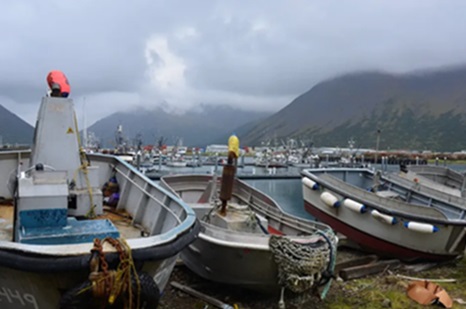
Alaska fishermen and processing plants are in limbo as a state-backed seafood company teeters
The fishing fleet in the Southwest Alaska town of King Cove would have been harvesting Pacific cod this winter. But they couldn’t: Skippers had nowhere to sell their catch. The enormous plant that usually buys and processes their fish never opened for the winter season. The company that runs the plant, Peter Pan Seafoods, is facing six-figure legal claims from fishermen who say they haven’t been paid for catches they delivered months ago. King Cove’s city administrator says the company is behind on its utility payments. And now, residents fear the plant may stay closed through the summer salmon season, which would leave the village with just half of the revenue that normally funds its yearly budget. “We should be fishing right now,” said Ken Mack, a longtime King Cove fisherman. more, >>click to read<< 09:36
Alaska fishermen will be allowed to harvest lucrative red king crab in the Bering Sea
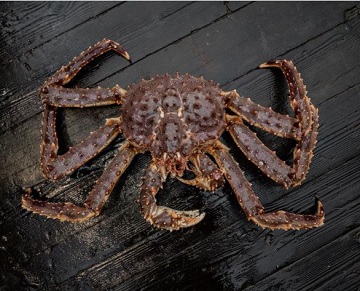 Alaska fishermen will be able to harvest red king crab for the first time in two years, offering a slight reprieve to the beleaguered fishery beset by low numbers likely exacerbated by climate change. There was no such rebound for snow crab, however, and that fishery will remain closed for a second straight year, the Alaska Department of Fish and Game announced Friday. “The Bristol Bay red king crab fishery for the prior two seasons were closed based on low abundance and particularly low abundance of mature-sized female crabs,” said Mark Stichert, the state department’s ground fish and shellfish management coordinator, “Based on survey results from this year, those numbers have improved, some signs of modest optimism in terms of improving abundance in Bristol Bay red king crab overall and that has allowed for a small but still conservative fishery for 2023 as the total population size is still quite low,” he said. >>click to read<<11:52
Alaska fishermen will be able to harvest red king crab for the first time in two years, offering a slight reprieve to the beleaguered fishery beset by low numbers likely exacerbated by climate change. There was no such rebound for snow crab, however, and that fishery will remain closed for a second straight year, the Alaska Department of Fish and Game announced Friday. “The Bristol Bay red king crab fishery for the prior two seasons were closed based on low abundance and particularly low abundance of mature-sized female crabs,” said Mark Stichert, the state department’s ground fish and shellfish management coordinator, “Based on survey results from this year, those numbers have improved, some signs of modest optimism in terms of improving abundance in Bristol Bay red king crab overall and that has allowed for a small but still conservative fishery for 2023 as the total population size is still quite low,” he said. >>click to read<<11:52
Warming bonus
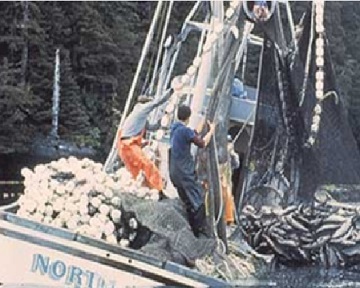 A warmer ocean continues to smile on Alaska commercial salmon fishermen, but the fish market is sadly another story. The 49th state these days finds itself vying with Russia to become the world’s biggest supplier of cheap salmon to stuff into cans and pouches while upscale consumers spend their money on nice, fat salmon filets. Norwegian salmon farmers – Leroy, Mowi and others who specialize in six-and-a-half to 13-pound Atlanatic – are posting record profits and worry about being taxed by the Norwegian government the way Alaska taxes oil, and Alaska fishermen are waiting to find out just how low the final price for the bulk of their catch, pink salmon that have in recent years averaged 3.4 pounds, according to Alaska Department of Fish and Game data. >>click to read<<
A warmer ocean continues to smile on Alaska commercial salmon fishermen, but the fish market is sadly another story. The 49th state these days finds itself vying with Russia to become the world’s biggest supplier of cheap salmon to stuff into cans and pouches while upscale consumers spend their money on nice, fat salmon filets. Norwegian salmon farmers – Leroy, Mowi and others who specialize in six-and-a-half to 13-pound Atlanatic – are posting record profits and worry about being taxed by the Norwegian government the way Alaska taxes oil, and Alaska fishermen are waiting to find out just how low the final price for the bulk of their catch, pink salmon that have in recent years averaged 3.4 pounds, according to Alaska Department of Fish and Game data. >>click to read<<
. >>click to read<< 11:55
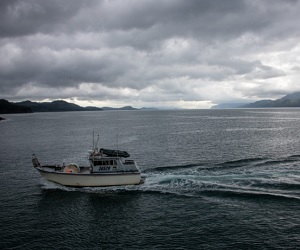
Harvesters remain resilient in facing economic challenges of Coronavirus
No one reading this needs to be reminded that we are in uncharted waters as thousands of Alaska fishermen set out to sea for the salmon season. As a fisherman with two young boys, I felt a deep sense of both privilege and responsibility as I set my nets in the glacier-fed waters of Taku Inlet in late June. Most fishing seasons the biggest questions are: Will the salmon come early or late? Will they be swimming deep or along the shoreline? This summer the questions are: Will Alaska’s independent fishermen financially survive the coronavirus? Will there be buyers willing to pay a decent price for their catch? Will fishermen get access to the personal protective equipment and testing that they need to avoid the spread of coronavirus? Will the long-fought Pebble mine be permitted while Bristol Bay’s fishing fleet is out risking their lives? By Tyson Fick >click to read< 14:47
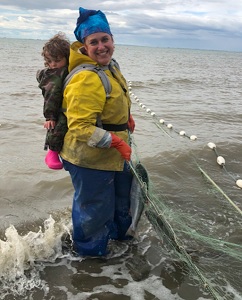
How Alaskan Fishermen Are Dealing With The Coronavirus
While the pandemic is crippling every industry, the seafood supply chain is at a standstill. Producing more by volume than all other states combined, Alaskan fisheries are exceptionally important to seafood markets. The outbreak could disrupt the start of salmon season for Alaskan fishers this year, and there is currently little understanding of how the seafood industry will be affected now and in the future. The salmon season in Alaska runs from May through September. In this time, many fishers pull in a majority of their annual income. >click to read< 17:44
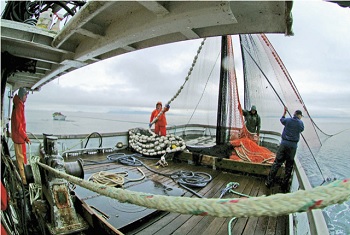
FISH FACTOR: First checks finally set for 2016 pink salmon disaster
It’s been a long time coming but payments should soon be in hand for Alaska fishermen, processors and coastal communities hurt by the 2016 pink salmon run failure, the worst in 40 years. Congress OK’d more than $56 million in federal relief in 2017, but the authorization to cut the money loose languished on NOAA desks in D.C. for more than two years. The payouts got delayed again last October,,, >click to read< 17:18
Alaska fishermen gain edge in fight over sustainability labeling
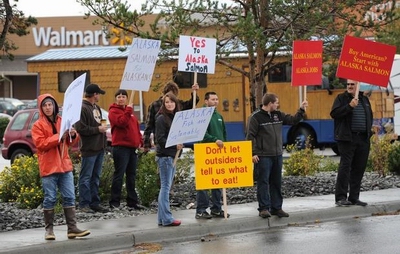 Early last year, Alaska’s wild salmon fishing industry decided to end its partnership with the seafood world’s most prominent sustainability certification group in favor of its own labeling efforts. But the move quickly drew a reaction from customers, as Wal-Mart and others said they would no longer buy Alaskan salmon without the independent check. Now, the Alaska salmon industry appears to have won the fight, recently saying it was standing firm in its decision to drop the outside certification group. more@adn 15:22
Early last year, Alaska’s wild salmon fishing industry decided to end its partnership with the seafood world’s most prominent sustainability certification group in favor of its own labeling efforts. But the move quickly drew a reaction from customers, as Wal-Mart and others said they would no longer buy Alaskan salmon without the independent check. Now, the Alaska salmon industry appears to have won the fight, recently saying it was standing firm in its decision to drop the outside certification group. more@adn 15:22
Alaska fishermen and their families have led the Walmart/MSC charge – Alaska salmon row moves onto political stage
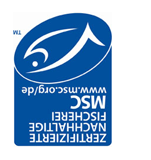
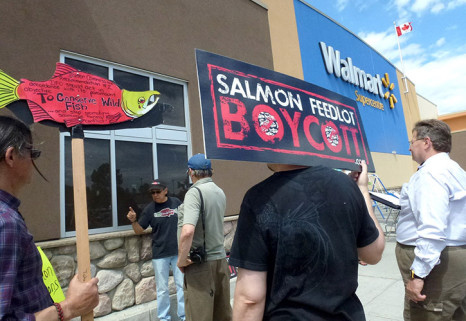 THE ongoing dispute between Alaskan salmon fishermen and the US retail giant is moving into the political arena. Walmart has said it will only buy Marine Stewardship Council (MSC) certified fish, but the Alaskan fishermen have withdrawn from MSC because they say it is too bureaucratic and expensive, adding that there are other equally valid certifications to which they belong. more@fishupdate
THE ongoing dispute between Alaskan salmon fishermen and the US retail giant is moving into the political arena. Walmart has said it will only buy Marine Stewardship Council (MSC) certified fish, but the Alaskan fishermen have withdrawn from MSC because they say it is too bureaucratic and expensive, adding that there are other equally valid certifications to which they belong. more@fishupdate
Alaska fishing groups protest expanded observers program Ketchican, Alaska
“A lot of Alaska fishermen are sitting here saying this program, which is scheduled to start in a month, is extremely onerous for the small community-based boats and doesn’t contain the logistical detail that we need to know – and didn’t have input on – in order to minimize the impact on our businesses,” Falvey said.
The new program will include commercial boats under 60 feet. For 2013, vessels under 40 feet will remain exempt.
Read more: Fairbanks Daily News-Miner – Alaska fishing groups protest expanded observers program






